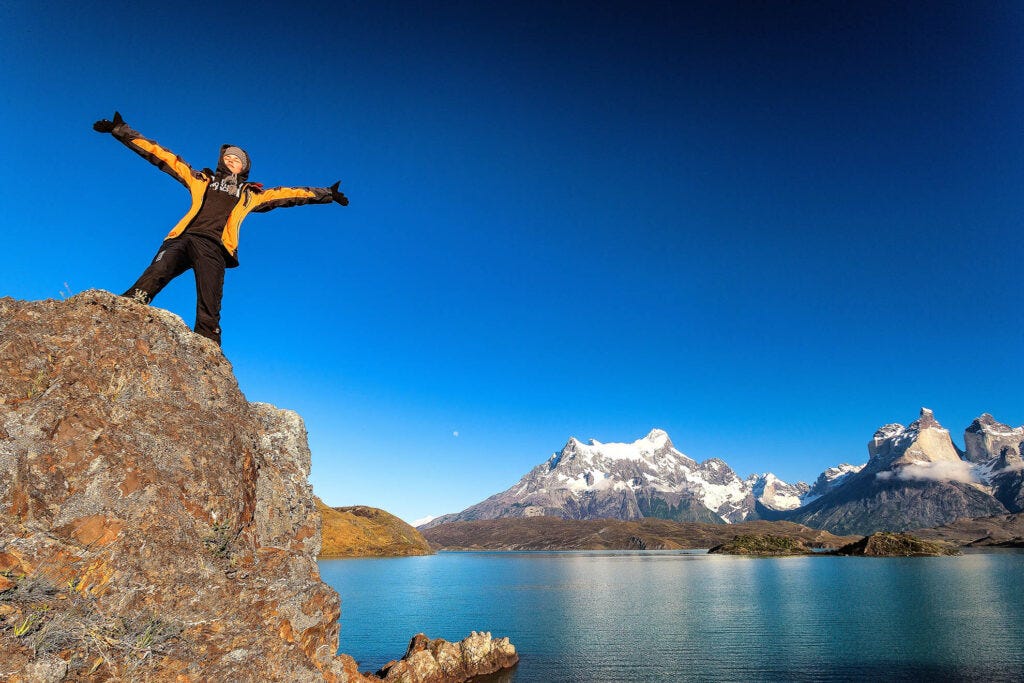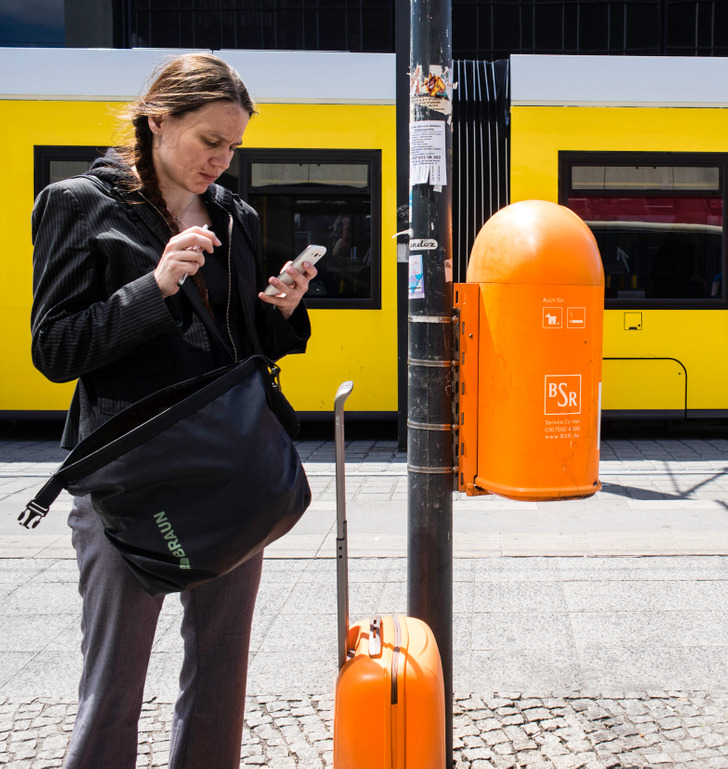
Exploring the world alone is one of life’s most freeing and fulfilling experiences, especially as we enter our golden years. For many seniors, solo travel offers unparalleled opportunities for self-discovery, cultural immersion, and embracing independence. It allows you to set your own pace, follow your passions, and truly connect with destinations on your terms, fostering a renewed sense of purpose and excitement.
However, it’s natural for safety concerns to sometimes get in the way. Thoughts of getting lost, managing health needs abroad, or simply navigating unfamiliar environments can create hesitation. But here’s the wonderful truth: with the right preparation and a confident mindset, solo travel can be not just incredibly safe, but profoundly rewarding, opening up a world of adventure you might not have imagined.
Ignoring key travel safety practices can lead to unnecessary stress, unexpected costs, and even health or legal complications far from home. Imagine arriving at your destination only to find your accommodation isn’t as promised, or misplacing essential medication because it was packed in checked luggage. The anxiety of a dead phone in an unfamiliar place, without anyone to call, is a scenario no one wants to face. For senior travelers, staying connected, being thoroughly prepared, and planning ahead are not merely helpful suggestions—they are absolutely essential for a smooth and enjoyable journey.

1. **Assess Your Abilities Honestly**
Before you even begin dreaming of destinations, it’s paramount to be honest and realistic about your physical abilities. There’s no sense in booking an adventurous trip to scale the Inca Trail to Machu Picchu if extensive hiking isn’t a comfortable reality for you. Understanding your current fitness level and any medical considerations is the very first step toward planning a truly enjoyable and safe solo adventure.
If your medical issues make it challenging to walk long distances, or if you require frequent rest periods, then planning a vacation that accommodates these needs is crucial. Consider trips focused on relaxation, cultural immersion with less strenuous activity, or destinations where transportation is readily accessible. The goal is to ensure you can fully participate in and enjoy your chosen activities without undue strain or discomfort.
Don’t hesitate to use assistive devices like a walker or a cane if you know they will help you navigate and participate more comfortably. For instance, a folding walking cane with a seat can be a fantastic tool for sightseeing, offering a convenient rest spot whenever you need one. Similarly, if hearing is a challenge, ensure group tours can accommodate your needs, perhaps by arranging to be consistently close to the guide.
Cruises, including delightful river cruises, stand out as excellent options for solo senior travelers. They offer a wonderful balance of relaxation, opportunities to make new friends, and visits to beautiful destinations without the constant need for packing and unpacking. Ultimately, older travelers need to be genuinely honest with themselves about what they are truly capable of doing, as this self-awareness is the key to ensuring the trip is genuinely fun and fulfilling.
Read more about: Steadfast Monarchy: Prince William Steps Up as King Charles Navigates Health Challenges
2. **Plan & Book with Reputable Sources**
Securing your flights and accommodation through verified and trusted platforms is a foundational safety measure for any solo journey. Whether you use established online travel agencies like Trip.com or Expedia.com, or engage with reputable Travel Advisors who specialize in senior or accessible travel, prioritizing trustworthy sources helps minimize unforeseen issues and ensures reliability.
When researching potential accommodations, always seek out reviews specifically written by other solo travelers or older adults. Their insights are invaluable, as they often highlight critical details such as accessibility features, the safety of the location, and the responsiveness of the host or hotel staff. These firsthand accounts provide a layer of reassurance and practical information that general reviews might miss.
Thorough research extends beyond just booking. Before you finalize your plans, dedicate time to researching the city or country you intend to visit, the specific hotel or hostel where you’ll be staying, and the activities you plan to engage in. Investigate the airlines you’ll be taking and any airports where you’ll have layovers. This comprehensive approach allows you to make informed decisions and identify any potential safety concerns well in advance.
If your research uncovers information suggesting a hotel or an entire city might not be as safe as you’d hoped, you have the flexibility to adjust your trip before departure. This proactive planning is crucial for building confidence and ensuring you feel as secure as possible throughout your travels, transforming potential worries into peace of mind.
Read more about: Mastering Your Money: 10 Proven Budgeting Strategies for Financial Control and Long-Term Success

3. **Choose Your Destination & Accommodation Wisely**
Selecting the right destination is crucial for a safe and enjoyable solo senior trip, as it directly impacts your comfort and ease of exploration. While challenging hikes might have appealed in younger days, a charming, flat city rich with historical sites often proves a better, more accessible fit now. Prioritize locations that align with your current physical capabilities and interests, ensuring a relaxed and fulfilling experience.
Imagine strolling through “walkable wonders”—charming, pedestrian-friendly neighborhoods with inviting cobblestone streets and bustling piazzas filled with cafes. These types of cities allow you to explore at your own pace, soak in the local sights, and truly absorb the atmosphere without feeling rushed or overwhelmed. Easy navigation enhances your sense of freedom and enjoyment.
Effortless exploration also hinges on accessible public transportation. Prioritize cities that boast user-friendly bus, subway, or train systems, allowing you to reach every corner of your chosen destination with ease and independence. Beyond logistics, a welcoming atmosphere is key; research cities known for their warm hospitality, where friendly and helpful locals can make a significant difference in creating truly memorable experiences.
When it comes to accommodation, smart choices directly enhance your security. Opt for hotels or rentals situated in central, well-lit, and populated areas. Ensure they are easily accessible via public transport or registered cabs and equipped with basic security features such as a front desk, cameras, and secure locks. Avoid isolated or budget stays with inconsistent reviews, especially when traveling solo, as these can present unnecessary risks.
Furthermore, if extensive walking is not feasible, prioritize hotels located near public transportation hubs to maintain mobility. For wheelchair users, it’s essential to seek out hotels offering ground-floor rooms or those with easily accessible elevators. Additionally, spacious and accessible bathrooms, complete with grab bars, can dramatically improve both the safety and comfort of your stay, making your hotel a true sanctuary.
Read more about: Your Ultimate Guide: 15 Essential Steps to Prep Your Classic Car for an Epic 1000-Mile Rally Adventure

4. **Stay Digitally Connected & Embrace Technology**
In today’s interconnected world, technology is an indispensable ally for senior solo travelers, offering layers of safety, convenience, and peace of mind. Embracing these simple technological tools can make your adventures smoother than ever, ensuring you’re always connected and informed, no matter where your journey takes you.
Before you depart, ensure your smartphone is fully equipped. This means having an eSim or a local SIM card plan ready for international and local calls, allowing you to reach out whenever needed. Crucially, load your phone with essential apps like Google Maps for navigation, WhatsApp for communication with loved ones, and ‘Find My Phone’ for security in case it’s misplaced.
One of the most vital steps is saving emergency contacts under “ICE” (In Case of Emergency) in your phone. This provides immediate access for anyone assisting you if you’re unable to communicate. As a bonus, always carry a reliable portable phone charger. A dead battery can quickly turn a minor inconvenience into a stressful situation, leaving you isolated in an unfamiliar place.
Translation apps are another game-changer, helping you confidently navigate foreign streets, connect with locals, and immerse yourself in the culture without language barriers. Some even offer real-time conversation translation. Offline maps and guidebooks, accessible through apps, allow you to explore hidden alleys and charming squares at your own pace, freeing you from the worry of fickle internet connections.
Beyond communication and navigation, consider itinerary and safety apps designed to streamline your plans, storing everything from flight and reservation details to emergency contacts in one secure place. For an added layer of security, a GPS tracking device can provide reassurance. The good news is some clever technologies combine functionalities, so you might even find a GPS tracker that doubles as a power bank, offering both connectivity and location awareness in one handy device.
Read more about: Beyond ‘Discontinued’: Mastering the Art of Resurrecting Classic Car Engines in a World of Vanishing Parts

5. **Pack Light & Smart**
Before you embark on your journey to explore new horizons, let’s talk about luggage. Who truly wants to wrestle with a heavy, cumbersome suitcase when there are charming cobblestone streets to conquer and hidden gems to discover? Packing light is not just a convenience; it’s a strategy for senior solo travel that enhances your freedom, reduces physical strain, and generally makes for a more fluid and enjoyable experience.
When selecting your wardrobe, focus on versatility. Neutral-colored clothing—think khaki, navy, or black—can form the foundation of a mix-and-match capsule wardrobe, allowing you to create many outfits with fewer items. You can always add pops of color and personal flair with lightweight scarves, jewelry, or a single statement piece, keeping your luggage streamlined and adaptable.
For a stress-free trip, especially if laundry access might be limited, prioritize wrinkle-resistant fabrics. These garments maintain a neat appearance with minimal effort, eliminating the need for extensive ironing. Furthermore, pack for adaptability: include a light scarf, a packable jacket, and quick-drying clothes to prepare for varying climates and unexpected weather changes without overpacking.
Comfortable and sturdy footwear is non-negotiable. Invest in at least one pair of supportive walking shoes that have been thoroughly broken in before your trip. Your feet will undoubtedly thank you for prioritizing comfort, allowing you to explore for longer periods without discomfort. An additional pair of versatile, comfortable shoes can also be a good idea for evenings or different activities.
For an effective packing strategy, always start by making a detailed list of your absolute essentials, and then build your luggage around these items. Resist the temptation to include “just in case” items that often go unused and only add unnecessary weight. Minimize the number of bags you bring; multiple heavy bags will only slow you down and make navigating airports and public transport more challenging.
Finally, and most critically, always carry your essential medications in their original packaging within your carry-on luggage. Do not pack them in checked bags. This also applies to a doctor’s note for any medical devices, your travel insurance details, a copy of your passport and visa, and an emergency contacts list. For an extra layer of security, pack duplicates of all important documents and store them separately from the originals. This foresight provides invaluable protection against theft or loss, ensuring you always have vital information at hand.
Read more about: Beyond the Leash: 12 Essential Lifehacker Tips for a Stress-Free Pet Travel Experience

6. **Secure Medications & Important Documents**
Ensuring the safety and accessibility of your prescribed medications and crucial documents is an absolute non-negotiable for senior solo travelers. This step is fundamental to your health and peace of mind while abroad, preventing potential crises and significantly reducing stress should an unexpected situation arise. Proper management of these essentials allows you to focus on enjoying your journey.
Always, without exception, carry your prescribed medications in their original packaging within your carry-on luggage. This is a critical distinction; never place essential medications in checked baggage. If your checked luggage is delayed, lost, or mistakenly routed to another destination, you will still have immediate access to your vital medicines, preventing any interruption to your health regimen.
Going a step further, it is highly recommended to pack a small, extra supply of your most critical medications. This foresight acts as a buffer in case your return journey is unexpectedly delayed, or if you find yourself stuck somewhere longer than originally planned. A few extra days’ worth can provide significant reassurance and prevent frantic searches for pharmacies in unfamiliar locales.
Beyond medications, a suite of other important documents must also accompany you in your carry-on. This includes a doctor’s note for any medical devices you may use, detailed travel insurance information, a copy of your passport and visa (even if you carry the originals), and a comprehensive list of emergency contacts, both local and international. These documents are your lifeline in an emergency.
For an ultimate safeguard, make duplicates of all these critical documents—medication lists, doctor’s notes, passport copies, insurance details, and emergency contacts. Store these duplicates in a separate, secure location within your luggage, away from the originals. This ensures that even if your primary documents are lost or stolen, you have a complete set of backups to help navigate any administrative or medical challenges.
Read more about: Beyond the Fine Print: 9 Crucial Insurance Policy Aspects Agents Wish You’d Stop Overlooking

7. **Share Your Itinerary & Implement a ‘Buddy System’**
One of the most effective and reassuring safety nets for solo senior travelers is establishing a ‘buddy system’ and consistently sharing your itinerary with trusted individuals back home. This simple act creates a vital connection to your support network, ensuring that someone always knows your whereabouts and can act swiftly should any unforeseen circumstances arise.
Before you depart, provide a detailed copy of your itinerary to a trusted family member or a close friend. This should include your flight details, the names and addresses of all your accommodations, and a rough outline of your intended activities and movements. Having a designated contact with this comprehensive knowledge is absolutely invaluable in case of an emergency, offering immediate guidance to those who care about you.
Beyond the initial itinerary sharing, it’s highly recommended to maintain regular contact throughout your trip. Make it a practice to check in with your trusted contacts every couple of days, perhaps through a quick message or a video call. This consistent communication keeps them updated on your well-being and current location, offering peace of mind to both you and them.
Consider utilizing technology to enhance this ‘buddy system.’ Programs like Life360, or simply sharing your location services on your smartphone, can provide an extra layer of security. These tools allow your loved ones to quickly locate you if there’s an emergency and you’re unable to make contact yourself, transforming worry into proactive support.
This system ensures that even though you’re traveling solo, you’re never truly alone. Knowing that there are people keeping tabs on you and ready to assist provides a profound sense of security. It empowers you to explore with greater confidence, knowing that a safety net is always in place, making your solo adventure both safer and more enjoyable.
Mastering the Journey: In-Trip Safety, Awareness, and Well-being for Confident Solo Senior Travelers
Having laid the groundwork with thorough preparation, the next phase of your solo senior adventure focuses on navigating the journey itself with confidence and wisdom. These in-trip strategies are designed to keep you safe, aware, and well, allowing you to fully immerse yourself in the experience without unnecessary worries. From ensuring financial protection to trusting your inner voice, these tips empower you to master the art of confident solo travel, transforming every moment into a joyful exploration.
Read more about: Beyond the Grind: 15 Proven Tricks Long-Haul Truckers Use to Master Alertness and Focus on the Road

8. **Invest in Comprehensive Travel Insurance**
Even with the most meticulous planning, unforeseen circumstances can arise. This is precisely where comprehensive travel insurance for seniors becomes not just a recommendation, but a crucial safeguard for your peace of mind and financial well-being. Thinking of it as an essential companion on your journey can help alleviate many anxieties about potential mishaps, allowing you to travel with a greater sense of security.
Serious medical bills in a foreign country can become an overwhelming burden, especially for older adults. Travel insurance for seniors helps protect you against these unexpected situations. Plans often cover medical emergencies and hospitalization, ensuring you receive necessary care without devastating out-of-pocket costs. This coverage is invaluable, knowing that help is available should you face an unexpected health challenge while far from home.
Beyond medical needs, robust travel insurance typically extends to medical evacuation, which can be critical in severe situations. It also covers trip cancellation or interruption, protecting your investment if your plans change unexpectedly. Lost or stolen luggage is another common concern, and many policies offer coverage for this, helping replace essential items and reducing stress during your travels.
It’s wise to explore options like AXA Travel Protection plans, which are designed to cover a range of scenarios. They often include provisions for pre-existing conditions and other specific needs relevant to senior travelers. Remember to keep your insurance details readily accessible along with other important documents, like your vaccination card and prescriptions. AXA even offers travel insurance for seniors up to the age of 99, demonstrating that age shouldn’t be a barrier to securing protection.
Should you have questions about specific coverages or need assistance, don’t hesitate to reach out to licensed travel insurance agents. Many providers offer 24/7 multilingual insurance advisors who can help you navigate medical emergencies, connect you with local doctors, or even assist with communication if needed. This support network is a significant advantage, ensuring you’re never truly alone when facing a challenge abroad.
Read more about: Beyond the Leash: 12 Essential Lifehacker Tips for a Stress-Free Pet Travel Experience

9. **Be Smart About Transportation**
Navigating transportation in a new place can sometimes feel daunting, but with a few smart strategies, you can ensure your journeys are safe and hassle-free. Thoughtful choices about how you get around directly contribute to your overall security and enjoyment, allowing you to explore with confidence rather than apprehension. Prioritizing verified and reliable options is key to a smooth solo travel experience.
Always opt for registered cabs or trusted ride-sharing apps like Uber, Lyft, or Grab, depending on the region. These services provide accountability and often have safety features, such as driver tracking and customer support. If you’re arriving at an airport, consider arranging hotel-arranged airport pickups in advance. This eliminates the stress of finding transportation upon arrival, especially if it’s late at night or you’re unfamiliar with the local transport systems.
For sightseeing, consider day tours from verified and reputable companies. These tours not only provide comfortable and secure transportation but also offer the added benefit of expert guides and the opportunity to meet other travelers. Avoiding unmarked taxis or unsolicited drivers at airports and popular tourist spots is crucial, as these can pose unnecessary risks and potential scams.
When flying, try to minimize connections if possible, or book direct flights to your destination. Fewer connections reduce the time you spend waiting alone in unfamiliar airports, which can increase feelings of vulnerability. If connections are unavoidable, choose airlines you trust, as familiarity with their procedures and services can enhance your comfort and overall experience. Additionally, being aware of your surroundings, especially in busy transportation hubs, is always a good practice.
If you plan to rent a car, especially for shorter trips, remember the tips about avoiding night driving. Long drives after dark can be dangerous due to reduced visibility and the potential for increased fatigue. Taking an extra day for travel can be a worthwhile investment in your peace of mind, ensuring you can see everything around you on the road and arrive at your destination safely and comfortably.
Read more about: Beyond the Leash: 12 Essential Lifehacker Tips for a Stress-Free Pet Travel Experience

10. **Blend In and Safeguard Valuables**
As a solo traveler, particularly as a senior, blending into your surroundings can significantly reduce your visibility as a potential target for opportunistic crime. While it’s wonderful to embrace your unique style, adopting a discreet approach to your appearance and managing your valuables wisely are practical steps that enhance your personal security. This isn’t about hiding, but about being subtly smart.
Tourists, especially those who stand out, can sometimes be easy targets for scams or petty theft. To avoid this, it’s advisable to leave flashy jewelry, high-end bags, and other overtly expensive items at home. Instead, opt for neutral, local-appropriate clothing that allows you to move seamlessly through crowds without drawing undue attention. Dressing comfortably and practically also enhances your ability to navigate and explore freely.
Beyond clothing, walking with purpose and confidence sends a strong signal that you are aware of your surroundings and not easily distracted. Learning a few local phrases, such as “hello,” “help,” “police,” and “thank you,” can go a long way in navigating interactions, showing respect for the local culture, and being able to call for assistance if needed. These small gestures can make a big difference in how you are perceived and how you feel in a new environment.
When it comes to valuables, the rule is simple: keep them to a bare minimum. There’s no need to parade your wealth. If you must carry important documents like your passport, credit cards, or a moderate amount of cash, store them securely in a money belt or a hidden pouch worn under your clothing. Avoid keeping all your cash and cards in one place; instead, distribute them in different secure spots.
Situational awareness is paramount. This means being alert to your surroundings, observing people, and trusting your gut feeling if a situation feels off. By being mindful of who is around you, avoiding excessive displays of wealth, and keeping your essentials out of sight, you empower yourself to travel more securely. This proactive approach allows you to enjoy your explorations with greater confidence, knowing you’ve taken sensible precautions.
Read more about: Leonardo da Vinci: Unpacking the Genius of a Renaissance Polymath – From Master Painter to Visionary Inventor
11. **Protect Yourself in Your Accommodation**
Your chosen accommodation, whether it’s a hotel, bed and breakfast, or rental home, should be a safe haven where you can relax and recharge. However, even in reputable establishments, taking a few simple steps to enhance your security can provide significant peace of mind. Protecting yourself and your belongings within your room is a fundamental aspect of safe solo travel.
Upon checking into your room, consider using simple yet effective tools like door jammers. These portable devices can be easily installed to provide an additional layer of security, making it much harder for someone to force entry from the outside. There are many different kinds available, so choose one that suits your needs and is easy for you to operate. This small addition can significantly boost your sense of safety while you’re inside.
Another smart tip is to utilize the “Do Not Disturb” sign strategically. If you can forgo maid service for a day or two, placing the sign on your door handle and even leaving the television on can give the impression that the room is occupied, even when you’re out exploring. This simple action can act as a deterrent, helping to protect your belongings by suggesting someone is always present in the room.
Always use locks on your luggage, even when your bags are in your room. While it might seem overly cautious, luggage locks add a valuable layer of protection against opportunistic theft, particularly if staff or others have access to your room. It’s a quick and easy habit that significantly reduces the risk of your valuables going missing, whether you’re there or out for the day.
When booking your accommodation, if possible, try to request a room on an upper-level floor rather than the first floor. Rooms on higher floors generally offer less chance of unauthorized entry from outside, providing an additional layer of security. This consideration during the booking process can contribute greatly to your overall feeling of safety and comfort throughout your stay, making your temporary home truly feel like a sanctuary.
Read more about: Beyond the Leash: 12 Essential Lifehacker Tips for a Stress-Free Pet Travel Experience

12. **Minimize or Avoid Night Travel**
While the allure of a city lit up at night can be captivating, minimizing or outright avoiding night travel is a critical safety consideration for senior solo travelers. This is particularly true when arriving in a foreign destination, but also applies to longer drives or navigating unfamiliar areas after dark. Prioritizing your safety during these hours can prevent unnecessary risks and ensure a smoother journey.
Landing in a foreign destination at night can be inherently less safe, especially for single senior women. Navigating an unfamiliar airport, finding transportation, and reaching your accommodation in the dark can increase feelings of vulnerability and the risk of disorientation or encountering unsavory situations. It’s always preferable to schedule your arrivals during daylight hours whenever possible.
If a night arrival is unavoidable, make pre-arrangements for transportation. Hiring a reputable car service or utilizing hotel-arranged airport pickups is a much safer option than attempting to hail a taxi or use a ride-share service on the spot in an unfamiliar place. While it may cost a bit more, the added security and peace of mind are invaluable, ensuring you get to your destination safely and without added stress.
Beyond arrivals, consider the general challenges of driving or navigating at night. Many older adults experience difficulties with low vision in the dark, making night driving particularly hazardous. Reduced visibility increases the risk of accidents and makes it harder to identify landmarks or potential dangers. If your itinerary involves driving, plan your routes to ensure you are off the road before the sun goes down.
In some cases, avoiding night driving might mean adding an extra day to your travel time, but this can be a worthwhile investment. The peace of mind that comes from being able to clearly see your surroundings on the road, coupled with reduced fatigue, makes for a much safer and more enjoyable travel experience. It’s about being proactive in managing potential risks, so you can truly relax and enjoy your adventure.
Read more about: Unlock the Skies: 11 Life-Changing Secrets to Finding Cheap Flights with Google Flights

13. **Trust Your Instincts**
Your intuition is an incredibly powerful and often underestimated tool for staying safe, especially when traveling solo. If something — a location, a person, or a situation — doesn’t feel quite right, it’s crucial to listen to that inner voice. This innate warning system is your first and most reliable line of defense, guiding you away from potential harm before it escalates.
There’s a common saying, “It’s better to be safe than sorry,” and nowhere is this more applicable than when your gut feeling sends up a red flag while traveling. Don’t second-guess yourself or feel pressured to ignore that uneasy sensation. If a street feels too quiet, a person’s demeanor seems off, or an offer sounds too good to be true, these are all valid reasons to disengage and re-evaluate your situation.
Learning to trust your gut means being prepared to act on it immediately. If a place feels unsafe, leave immediately. This could mean changing your walking route, stepping into a well-lit shop, or simply turning around. Your personal safety is paramount, and you owe it to yourself to remove yourself from any situation that causes discomfort or alarm, without needing a logical explanation to justify your feeling.
If you find yourself in a situation where you feel unsafe or vulnerable, do not hesitate to ask for help. Hotel staff, tour guides, or even fellow travelers can be valuable resources. In more serious instances, contacting local authorities is the correct course of action. It’s always better to be cautious and seek assistance than to regret not doing so later.
Remember, solo travel is about empowerment and freedom, and part of that empowerment is knowing when and how to protect yourself. Honoring your instincts, acting decisively, and seeking help when necessary are not signs of weakness, but rather hallmarks of a confident and savvy solo senior traveler. Let your intuition be your guide to a truly secure and rewarding journey.
Read more about: Unmasking the ‘Lemon’: A Consumer Reports Guide to Dodging Used-Car Dealer Tricks

14. **Prioritize Health, Rest, and Flexibility**
Solo travel, especially as we age, is not about racing through a checklist of sights but about savoring each moment and maintaining your well-being. Prioritizing your health, ensuring adequate rest, and embracing flexibility in your itinerary are paramount to an enjoyable and sustainable adventure. This approach ensures you return home refreshed, with cherished memories, rather than exhausted.
Traveling can be taxing on both mind and body, particularly for seniors. It’s essential to build in ample time for rest breaks, naps, and quiet reflection throughout your day. Avoid the temptation to overpack your schedule, as this can lead to fatigue and diminish your enjoyment. Instead, create windows to simply sit back, enjoy a good meal, and soak in the atmosphere of your surroundings.
Consider your nutritional needs carefully. Maintaining healthy meals and staying well-hydrated are crucial for keeping up your energy levels and supporting your overall health. It’s also important to remember your medication reminders, ensuring your health regimen stays on track, even with time zone changes or new routines. Sometimes, indulging in a relaxing massage or a facial can be a wonderful way to wind down and rejuvenate.
Embracing freedom and flexibility is one of the greatest joys of solo travel. You have the liberty to adjust your plans, schedule early morning museum visits, or spontaneously explore local markets without needing to cater to anyone else’s preferences. If you need a breather, you can simply take one without feeling apologetic, ensuring you experience new places at your own comfortable pace.
Furthermore, giving yourself extra time to adjust to jet lag can make a world of difference. Arriving a day or two early to simply rest and acclimate can prevent you from losing entire days to fatigue, allowing you to fully appreciate your destination from the start. Ultimately, this journey is about creating a balanced schedule that ensures fun, adventure, and abundant opportunities for self-discovery, allowing you to truly enjoy every step of the way.
Embracing Your Solo Senior Adventure with Confidence
Read more about: Beyond the Leash: 12 Essential Lifehacker Tips for a Stress-Free Pet Travel Experience
There you have it – a comprehensive guide to not just planning, but truly mastering the art of solo travel after 60. From the foundational preparations that build your peace of mind to the in-the-moment strategies that ensure your safety and well-being, every tip is designed to empower you. We’ve covered everything from wisely choosing your destination and packing smart, to securing your health with insurance and trusting your incredible instincts. Solo travel for seniors is more than just a trip; it’s a testament to your independence, resilience, and boundless curiosity. It’s an opportunity to discover new places, new cultures, and perhaps most importantly, new facets of yourself. So, take these insights, pack your bags with wisdom and excitement, and step out into the world. Your next great adventure is waiting, and you’ve never been more ready to seize it with joy and confidence. Go on, turn those dreams into destinations!





